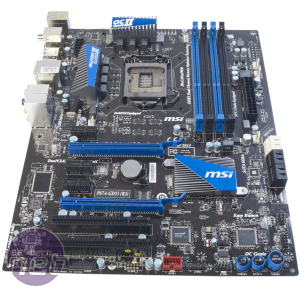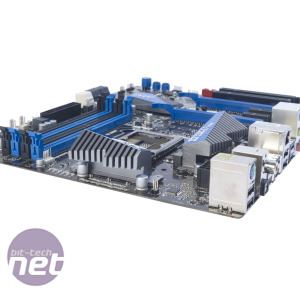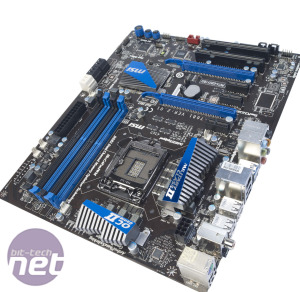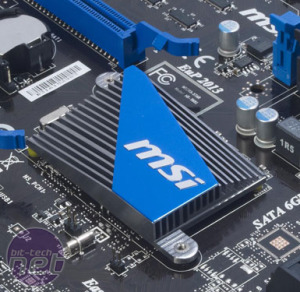
Performance Analysis
At stock speeds, the GD53 was in the thick of the action. It wasn’t the quickest board on test, but the margins we’re talking about here are tiny. Its overall score of 1,899 in our Media Benchmarks was only 37 points behind the Asus Sabertooth P67, for example.Gaming was a different story, as the GD53 returned a minimum frame rate of 74fps in Arma II. This was the second-best result we’ve seen and was beaten only by the gaming-friendly Sabertooth P67. SATA read and write speeds were good as well, if not spectacular. The 3Gbps average read speed of 244MB/sec was faster than those of the ASRock P67 Extreme4, but slower than the Asus LGA1155 boards we've tested. The SATA 6Gbps read speeds told a similar story; they were the quickest of the non-Asus motherboards, which seems to be the best result MSI could hope for given Asus’ domination in this area.
Overclocking the GD53 was easy too, as its EFI is sensibly laid out. It’s more colourful and cartoony than the Asus EFI, which can be off putting at first, but it’s an effective interface. It was also effective at recovering from failed overclocks, politely dumping us back into the EFI if we were a touch too ambitious.
After a little tinkering, we were able to ramp up the frequency of our test CPU to 5GHz. This is 100MHz behind the best result we’ve seen from our test chip, but it’s still a fantastic result. To achieve this, we had to pump 1.42V through the vcore, set the System Agent voltage to 1.145V and push 1.23V through the CPU I/O.
These voltages are fairly high, but the VRM heatsinks remained much cooler than other motherboards during stress-testing, even with no airflow over them. This is in sharp contrast to other boards such as the Asus P8P67, which needed a dedicated fan pointed at its VRM heatsinks to stop them reaching ludicrous temperatures.
The GD53 reacted better than most boards to this bump in clock speed in our Media Benchmarks too. It leapt above the competition that bettered it at stock speeds, and was faster than motherboards that achieved similar overclocks, such as the Asus P8P67. Its overclocked overall Media Benchmarks score of 2,693 was the highest we’ve seen from a LGA1155 motherboard.
Gaming performance also saw an improvement from the overclock, although it wasn’t of the same magnitude as we saw in applications. The board’s new minimum frame rate of 76fps was actually quite poor and sat at the bottom of the table. We got this result no matter how many times we ran the test.
Conclusion
The P67A-GD53 (B3) is an excellent motherboard, as MSI has made sensible decisions about which features to keep and which to cut out. The on-board power switches and rear-panel CMOS reset switch are useful additions, and the removal of the internal USB 3 ports and rear FireWire port are sacrifices with which we can live quite easily.The VRM circuitry is this motherboard’s party piece, though, as it remained cool, even when we were shoving bucket-loads of extra voltage through it with our overclock. If you’re in the market for a new LGA1155 motherboard, this is the one to buy – we’ve yet to see a more well-rounded example than the MSI P67A-GD53 (B3).

-
Value23 / 25
-
Features25 / 30
-
Speed40 / 45


MSI MPG Velox 100R Chassis Review
October 14 2021 | 15:04












Want to comment? Please log in.